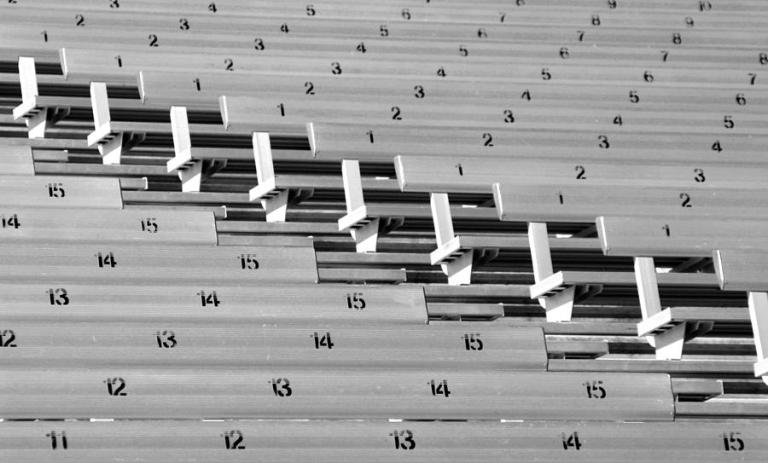
Similarly, in all other professions, there is a sense of order and structure.
This order implies that there is someone or something behind it, someone who has established this structure, right?
Now, let’s consider the universe. There are galaxies, solar systems, planets, day and night, seasons, life forms, and every living being grows and evolves in an orderly fashion—from birth to death, and beyond. There is such immense order and precision. There must be some greater power behind it, someone who has set everything into this order. Whether you call that power the Supreme Soul, Lord, God, or any other name.

We can relate to the goals of the homemaker, student, or any other professional. But how do we know what God’s intentions are with creation and His goals for the entire universe? Wouldn’t it be wise to understand His vision and mission so we can align with it? By doing so, we make it simpler for both sides—ourselves and the Lord. Otherwise, we are in a strange position, aren’t we? Like a person who lives in a house but does not follow the rules of the house – causing chaos to the rest of the people in the house and to the home owner.
There is a grand manual to help us with the understanding of why, how, what, when, etc —the Vedas. As Sri Krushna says in the Bhagavad Gita
sarvasya cha:ham hrudi sannivishto: maththas smruthir jna:nam apo:hanam cha | ve:dais cha sarvair ahame:va ve:dyo: ve:da:nthakruth ve:davide:va cha:ham || BG 15.15
To understand who God is, we must refer to the Vedas. They are the divine source of knowledge. Vedas say…
kshara:thmanow i:sathe: de:va e:kaha The Supreme God, in His invisible form, alone is the controller of both the inert and the living.
Even for the Supreme God, it is the Vedas that form the basis.ve:da sabde:bhyah e:va:dow de:va:dhi:na:m chaka:ra saha
Vedas support God in maintaining the order of the universe.
If you understand the vastness of Vedic knowledge, with which the entire universe is created, you can try to imagine the immense power of the Vedas. Now, do we still need to discuss the scientific relevance of the Vedas in modern society?
Here are a couple of examples to help us understand the scope of knowledge Vedas have. These examples will not only demonstrate its relevance but will also show that the Vedas are the foundation of all knowledge.
Anatomy
In the 9th century, there were some attempts to dissect a body to understand its functioning. However, these efforts faced resistance from both kings and society, and the studies didn’t progress. Later, in the 17th century, the medical fraternity made progress in studying human anatomy.
The Vedas, however, contain detailed explanations of the heart, lungs, kidneys, pancreas, and other organs. They not only describe the anatomy of physical structures but also delve into the functioning of the jna:na nadis (knowledge nerves), which are essential for transmitting ‘signals’ that influence patterns of behavior. Additionally, the Vedas describe the growth of a fetus, including specific details about what occurs during the 7th month of pregnancy—something not yet fully understood or observable by current science.
Topography
To understand the topography of a location, we need technology that captures images from above at sufficient heights to measure angles, distances, and other aspects. This technology was only developed in the 1950s with the advent of rocket science.
However, the Vedas describe the shape of the Earth and the arrangement of its land masses with surprising accuracy. For instance, the Vedas describe how the 27% of the Earth’s land came to its current shape, describing it’s current form as a rabbit standing on its legs and looking forward to eating from the bushes in front of it. For details, you can explore this…
Thus, let us not limit our thought around scientific relevance of Vedas in Modern society. Understand the scope and breadth of Vedas and we will never need to question it’s relevance in any specific aspect or for any specific type of society or culture.
-From the discourse of HH Chinna Jeeyar Swamiji – City Party Palace, Jahada, Biratnagar, Nepal -15th March 2025
We may wonder, ‘if everything is there in the Vedas, then why are modern scientists researching for and what else are students aspiring for in different streams of knowledge?’ A few years ago, a student from KL university asked Swamiji the same question. To know what Swamiji said in response to that, don’t miss watching the below…
[Excerpt of Swamiji’s response] Essentially, for any knowledge to be put into action, a lineage of instruction and practical training is essential. What we have lost over time is the lineage of people who practiced Vedic wisdom. Centuries of invasion have not only diluted this knowledge but also distorted it, causing much of it to disappear from practical use. There was a time when we had artisans who could weave a saree small enough to fit into a matchbox. The invaders learned these skills from our native artisans, but in their pursuit of power and control, they “cut the artisans’ fingers,” stripping them of their rightful authority over the craft and its practice.
This is just one example, but there are countless others, with similar stories unfolding in many areas. In some cases, we are now learning from others, despite Bharath being the land of the Vedas. For other skills, however, the world remains deprived of this knowledge, along with the research, insights and practical applications that should have flourished from it.
The seed will always remain solid, it is us who must with pure heart, desire to benefit from it’s fruits and be grateful in service towards the essence of that great divine Vedic knowledge.

Scientific Relevance of Vedas in Modern Society
Let’s begin with an example—of you. Are you a student, a teacher, a doctor, a scientist, a fashion designer, a video editor, a home maker or any other professional? As a homemaker, you are structuring your home and setting some principles such that it brings certain order. As a student, you are organizing your homework or preparing for exams in a structured manner.

Similarly, in all other professions, there is a sense of order and structure.
This order implies that there is someone or something behind it, someone who has established this structure, right?

We can relate to the goals of the homemaker, student, or any other professional. But how do we know what God’s intentions are with creation and His goals for the entire universe? Wouldn’t it be wise to understand His vision and mission so we can align with it? By doing so, we make it simpler for both sides—ourselves and the Lord. Otherwise, we are in a strange position, aren’t we? Like a person who lives in a house but does not follow the rules of the house – causing chaos to the rest of the people in the house and to the home owner.
There is a grand manual to help us with the understanding of why, how, what, when, etc —the Vedas. As Sri Krushna says in the Bhagavad Gita
sarvasya cha:ham hrudi sannivishto:
maththas smruthir jna:nam apo:hanam cha |
ve:dais cha sarvair ahame:va ve:dyo:
ve:da:nthakruth ve:davide:va cha:ham || BG 15.15
To understand who God is, we must refer to the Vedas. They are the divine source of knowledge. Vedas say…
kshara:thmanow i:sathe: de:va e:kaha
The Supreme God, in His invisible form, alone is the controller of both the inert and the living.
Even for the Supreme God, it is the Vedas that form the basis.
ve:da sabde:bhyah e:va:dow de:va:dhi:na:m chaka:ra saha
Vedas support God in maintaining the order of the universe.
If you understand the vastness of Vedic knowledge, with which the entire universe is created, you can try to imagine the immense power of the Vedas. Now, do we still need to discuss the scientific relevance of the Vedas in modern society?
Here are a couple of examples to help us understand the scope of knowledge Vedas have. These examples will not only demonstrate its relevance but will also show that the Vedas are the foundation of all knowledge.
Anatomy
Topography
-From the discourse of HH Chinna Jeeyar Swamiji
– City Party Palace, Jahada, Biratnagar, Nepal
-15th March 2025

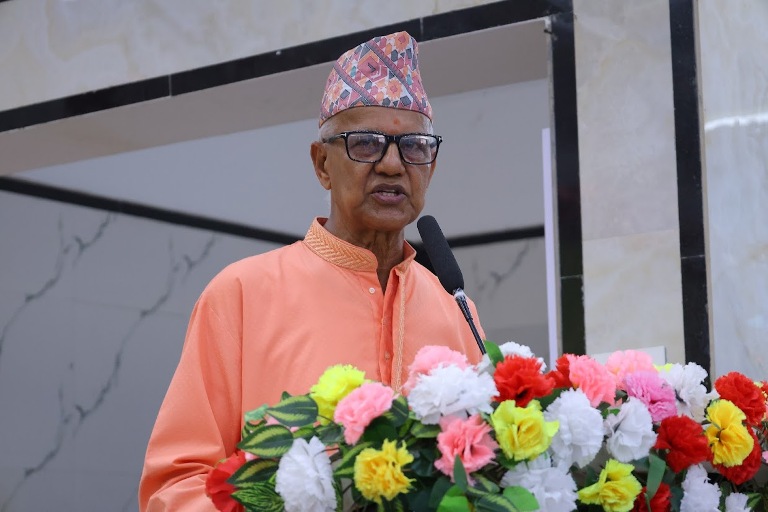
Koshi pradesh Governor Hon. Parsuram khapung

Program Coordinator: Suresh Kumar Sharma




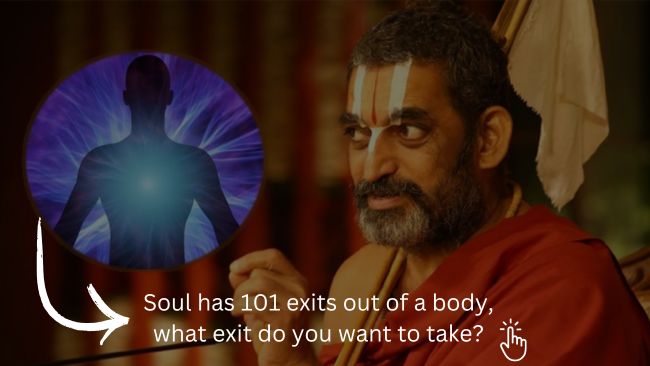
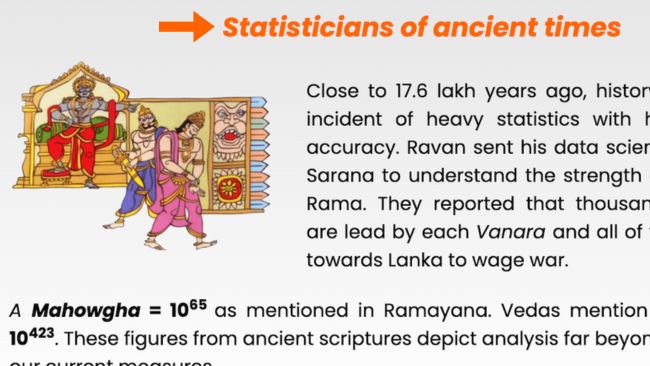
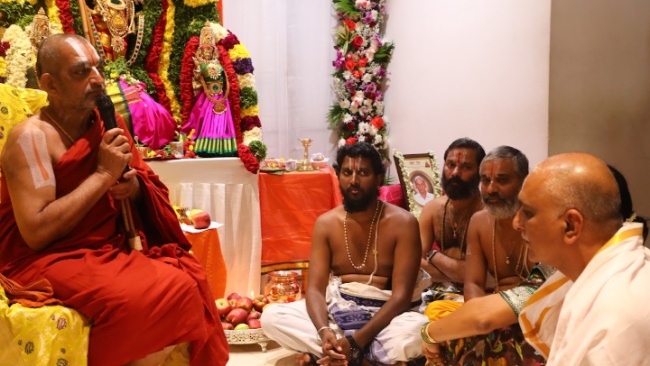

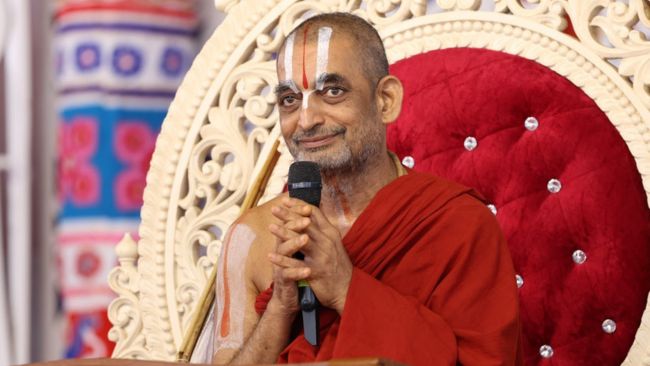

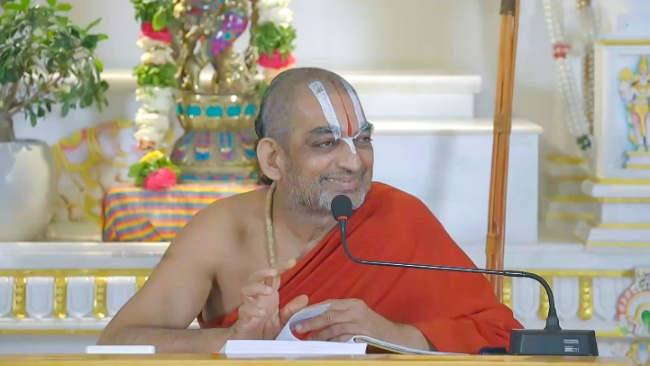
Jai Srimannarayana! That’s a powerful discourse on the scientific depth of the Vedas! It’s amazing how our ancient texts hold such profound insights, still relevant today.
An eye-opening insight into how the timeless wisdom of the Vedas continues to align with and enrich modern scientific understanding. Jai Sriman Narayana
We must share this message to one and all💕🙏💕
jaisreemannarayana
Wonderfully said by HH swamiji about numerals. We started counting in light years as we could not name such large numbers.
jaisreemannarayana
Wonderfully said that we lost our lineage. may be we are now using light years to measure large distances because we dont know to give names to such large numbers.
Any comment on this would be simply ignorance. The contemt is beyond any comments, opinions , views etc.